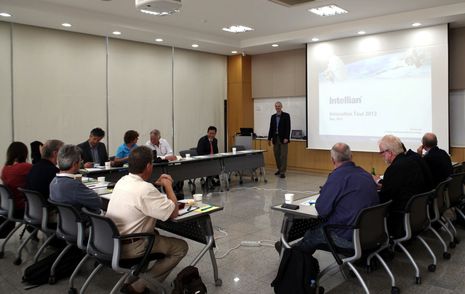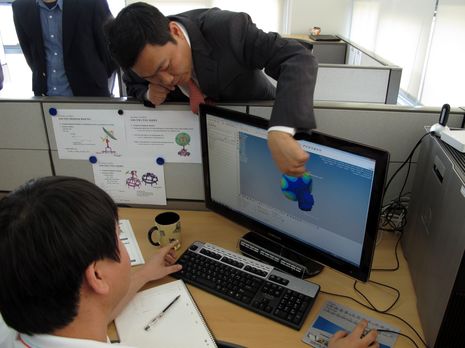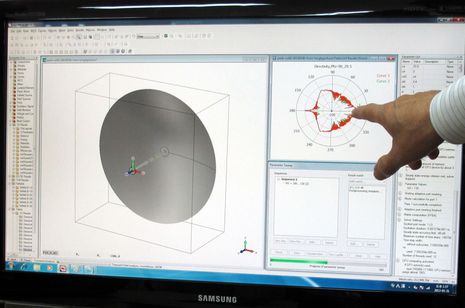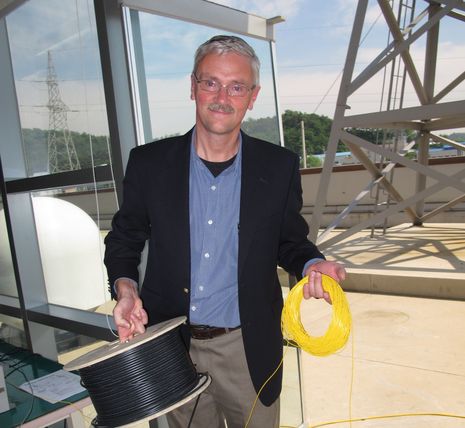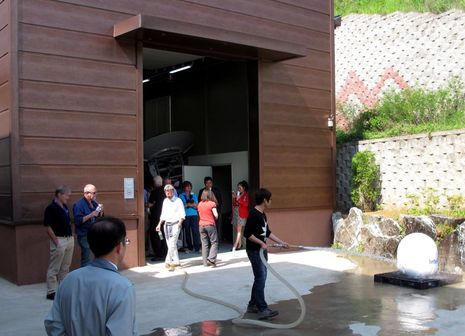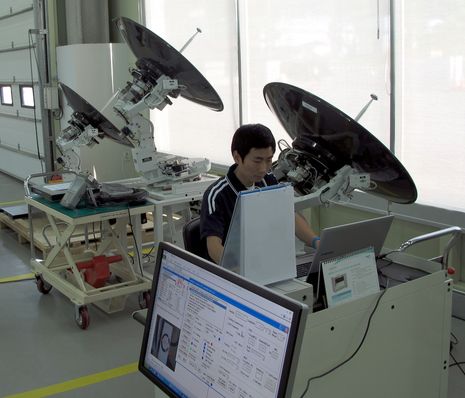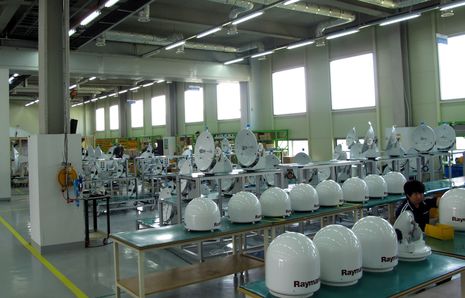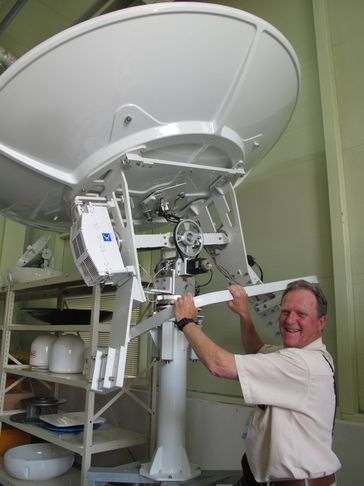
SAN FRANCISCO, CA ? 23APRIL06 ? Fifteen thousand people rally and march in San Francisco, demanding legalization and equality for undocumented immigrants, and protesting bills in the US Congress which would criminalize immigrant status and establish huge guest worker programs for large corporations.
Copyright David Bacon
The Dignity Campaign?s Response?To The Immigration Reform Bill
As organizations participating in the Dignity Campaign for Immigration Reform Based on Human and Labor Rights, we are very concerned about the harsh impact the Senate?s immigration reform bill will have on immigrants.? Rather than ?bring immigrants out of the shadows? this bill will hold millions in an underclass, vulnerable to exploitation and relegated to the ranks of the working poor, with no access to basic services.? Millions will have no hope of receiving permanent legal status, let alone citizenship.
We believe this bill will affect our communities for decades to come, in the same way we continue to feel the negative effects of the Immigration Reform and Control Act, passed in 1986.? It is important to look at what our world will be like if the Senate?s version of immigration reform passes, to expose the negative impacts the bill will have, and especially prepare to defend our communities.
We want legal immigration status for people living in the U.S. who don?t have it, and believe this desire unites millions in this country.? Diverse groups with many different experiences are all fighting today for the civil, labor and human rights of immigrants, and of all working people.? This fight didn?t start with this bill ? it?s been going on for generations.? It won?t end with it either.
This bill, however, does not reflect the aspirations of a majority of the US population to provide permanent resident status to the undocumented.? It is instead the product of corporate America, which wants to hold down the cost of labor, especially in high tech, the hotel and restaurant industry, construction, and the food growing and processing industry. Massive enforcement creates money-making opportunities through continued detention and the construction of?more border walls, which we already?know will not stop the flow of migration.
1. ? The bill?s legalization program is designed to delay permanent legal status, and exclude huge numbers of people.
There are far more restrictions on the legalization program in this bill then there were in 1986, although that was a limited bill also.? Instead of an inclusive program that quickly gives legal status to 11 million people, it sets up a series of difficult hurdles, especially for low-income people.
Wealthy people can essentially buy visas, and the bill codifies and expands their ability to do that permanently, under one of the amendments.? It gives preference to those with money who can pay to study in universities and those who want to invest here.? It requires, however, people to make 1.25 times the poverty level to remain eligible once they?ve applied for provisional resident status.? Millions of undocumented workers make wages close to the legal minimum.? Working full time, the federal minimum is $15,080 per year.? Millions of people can?t even get that much work.
A single person would have to make $14,362 to keep their provisional status, so even losing a few weeks a year could make them ineligible, or force them to work excessive hours to maintain this salary.? Getting fired would be disastrous, which makes joining unions or advocating for rights extremely risky.? And of course, millions of single parents supporting children clearly wouldn?t qualify, since a family of four would have to keep an income of $29,437 to maintain status.? That?s more than two fulltime minimum wage jobs.
A person in provisional status must maintain that required income for 10 years before he could apply for a green card.? Most minimum wage or low-income jobs have no security for anywhere near that long.? In the meantime, provisional status holders would have to pay a total of $2000 by the end of that time, per family member or in some cases per family.? People would have to enroll in English classes to show they are trying to learn the language (a clear violation of the Treaty of Guadalupe Hidalgo of 1848, which guaranteed Spanish-language rights.)? Too many arrests for even minor crimes would disqualify applicants.? In most poor communities of color, young people are targeted for anti-gang enforcement measures, and many build up records that would make them ineligible.
Many will not qualify for legalization and many with RPI status and W visas, for instance, are at risk of losing status at any point.? The net result of these exclusions is that the number of people who will be able to reach the 10-year goal posts for permanent legal status is not 11 million, but more likely half of that, according to many legal sources.
What will happen to the millions of people in our communities who will not qualify, or who become disqualified along the way?? Because of the bill?s increased enforcement measures, their situation will be worse than it is today.? It would criminalize job search for those who have no status and force immigrants back ?into the shadows?.? Our community must think about how it will defend them ? politically, economically, legally and socially.
Some immigrant communities and unions and leaders, especially in the Democratic Party, believe that despite the bill?s drawbacks millions of people will eventually gain U.S. citizenship.? They project that they will become voters who might change the political direction in important cities and states.? In Los Angeles, the legalization of 1986 eventually led to the city?s changed voting population, and a much more progressive city government.? In California the state itself is benefiting from this demographic shift.? Increasing the votes of immigrants could change the politics of Mississippi, North Carolina and other states now firmly controlled by the political right.
This is an important political goal because immigrants deserve political rights, like all other working people.? And when they get those rights, other working people benefit directly as well.
The current bill, however, is not a sure path to that goal.? A lot can happen over the next 10 years.? A reactionary administration or hostile Congress could change the way legalization is administered ? even repeal it ? before immigrants reach permanent legal status.? In immigrant families, where documented and undocumented people live together, the bill?s devastating impact will affect everyone.
There is no doubt that our communities need legalization, and are willing to pay a price to get it.? So the question immigrant communities need to ask ourselves is ? how high a price are we willing to pay?? Should we support a trade-off of some legalization for the codification of all the enforcement programs that we have fought against over the last 25 years? Or, should we build the movement we need to win legalization without sacrificing the rights of immigrants, and lining the pockets of the enforcement industrial complex?
?2. The bill will continue the criminalization of immigrants.
The U.S. already spends more money on immigration enforcement than all other Federal enforcement programs combined.? S.744 authorizes spending at least another $5.5 billion on enforcement at the border alone, at a time when our communities lack investments in schools and healthcare.? It relies on increased enforcement to shunt ?migrants into labor supply programs, which are designed?to keep the cost of labor down and ensure? low wages.
This bill will not end the enforcement programs that have led to the massive wave of deportations over the last decade, especially Secure Communities and 287g.? It continues to criminalize the lack of legal immigration status.? This will have a devastating impact on those who can?t qualify for legalization, and those who come without papers in the future.
At worksites throughout the country, tens of thousands of workers have been fired every year for the past decade?for not having legal immigration status.? This is the result of the last reform ? employer sanctions ? part of IRCA in 1986.? Under pressure from labor and immigrant rights groups, the bill now has provisions that would bar employers from using the lack of immigration status to punish workers for organizing unions or enforcing labor standards.? This is an important improvement.
But the reality is that the vast majority of workers who have been fired in recent years for lacking legal status were fired at the demand of federal authorities, not as a result of retaliation.? The bill not only allows these firings to continue, but would make them much more widespread by making it mandatory for all employers to check workers? status using the E-Verify database.? An added amendment calls for weekly reports of those applying for jobs whose legal status is ?not confirmed,? targeting even those looking for jobs.
In 1986, many of our current immigrant rights coalitions began?the effort to defend workers from the implementation of employer sanctions, the provision that said employers can?t hire people without papers.? In effect, this criminalized work for the undocumented, and led to workplace raids, I-9 audits and firings, and the creation of the E-Verify database.
Because the bill ignores the root causes of migration, all new undocumented workers coming in the future (plus those who fall out of the legalization process)?will become even more vulnerable.? It will become mandatory for all employers to use the E-Verify database, both to screen new hires and their existing workers.? Workers without papers will lose their jobs, and find it much harder to find new ones, and their families and communities will suffer because of it.? But very few will leave the country.? As we say, Aqui Estamos y No Nos Vamos, y Si Nos Echan, Nos Regresamos.
On the border, the bill will triple the money now spent on the Operation Streamline court in Tucson, where young migrants are brought in chains, and then sentenced to federal prison for crossing the border without papers more than once.? S. 744 will deploy drones and military-style enforcement including more border patrol agents and the National Guard.? Despite promises of a greater commitment to civil rights in border communities (now defined broadly as 100-miles north of the actual line) this militarization will inevitably undermine rights and create greater fear. Private corporations will run even more detention centers for immigrants ? another industry that will clearly benefit from the bill.
If it were true that migration is slowing drastically, and that future migrants will only be coming as guest workers, there would be no need for this ferocious enforcement.? But in fact, the bill is assuming that people will continue to come without papers.? The real impact is already plain in the desert, where hundreds die every year trying to cross.? These deaths will continue as a result of this bill?s provisions.
?3.? Migration will continue on a large scale, if we continue to ignore the root causes for displacement.
Over two hundred million people worldwide now live outside the countries where they were born.? Corporate trade agreements and structural adjustment programs produce poverty and global inequality, displacing communities in developing countries.? During the NAFTA years, from 1994 to the present, the number of Mexicans alone living in the U.S. grew from 4.6 million to 13 million ? 11% of Mexico?s population.? The percentage of Central Americans migrating is even greater.
Increasingly, in Mexico, the Philippines and other countries of origin, social movements are challenging forced migration, calling for political change and economic development that would make migration voluntary.? They advocate for the right to not migrate ? for a decent future with jobs, healthcare and education.?? The Senate bill, however, does not recognize the roots of migration, or call for renegotiating treaties like NAFTA that produce displacement.
This movement of people won?t stop.? The basic conditions that force people to leave home haven?t changed.? In fact, the bill assumes that it will continue, and proposes a series of guest worker visa programs and extreme enforcement measures to deal with continued migration.
The bill continues to link labor supply programs and enforcement, and is codifying into law what has become the hallmark of U.S. immigration policy over the past decade:?temporary workers.? Each year over the last several years, the U.S. has deported 400,000 people, while allowing corporations to recruit at least 250,000 in formal guest worker programs (H1B, H2A and H2B) and hundreds of thousands on other work visas.? This is moving back towards the bracero era, where in the mid-1950s the U.S. deported a million people annually, while allowing growers to recruit over 400,000.
In 1964 and 1965 the bracero program was abolished and replaced with a family-based system ? an achievement of our civil rights movement.? In 1986 IRCA began to move us backwards, reinstituting guest worker programs and criminalizing border crossing and work for the undocumented.
S. 744 accelerates that movement backwards.? It restricts family-based immigration by ending brother and sister preferences, and restricting petitions for adult children.? It?s employer bias is clear in establishing a point system in which employability (corporate needs) will have much greater weight in future migration than family relationships.
After starving the family preference system for visas to the point where reunification sometimes takes decades, S.744 proposes to clear the backlogs as a prelude to expanding a corporate labor supply system.? But S.744 won?t make the family visa system function better.? It will be much harder a decade from now for immigrants living in the U.S. to reunite their families, especially for low wage workers and farm workers.? And after the Democratic Senators? surrender in the Judiciary Committee, LGBT families will continue to be excluded from the family petition and reunification process.
4.? The bill will vastly expand guest worker programs, and force most migrants to come to the U.S. through them.?
Guest worker programs all allow employers to recruit workers in other countries, and then give them visas that require them to work in order to stay.? They have a history of abuse that goes back to the original bracero program, and programs that preceded it.
Henry Anderson, the only U.S. academic who interviewed braceros while the program was going on, made a study in 1956 that the University of California halted under grower pressure.? One bracero told him, ?We come here like animales rentados [rented animals], not like men.?? Anderson saw that, like today?s migrants motivated by the need to survive, ?All but a few were coerced workers, driven by a force more powerful than a physical lash ? their hunger and that of their families.?? He points out that contract labor programs today suffer the same inequality of power:? ?There will be major abuses in any contract labor system if all the power is on one side?It will happen if a ?guest worker? program is enacted, no matter what honeyed phrases may be coined.? It is in the nature of the beast.?
Defenders of the Senate?s expanded programs claim that, while some of the most abusive present programs, like H2B, will expand, protections have been negotiated for new ones.? They point to the ability of workers to move from one registered employer and job to another, to sue their employers in court, and (for some) eventually apply for permanent residence visas.? These will not, however, change the imbalance of power in these programs, especially since the punishment for being unemployed beyond a few weeks is still deportation.? That alone gives employers near total power over these workers, which is why they want the programs. Anderson?s study revealed that measures set up to protect workers from abuse during the bracero era were never implemented.
The cost of guest worker programs is borne by both?immigrant and resident workers.? Immigrants become deportable if they lose their jobs and can?t quickly find others, making the risk of joining unions or enforcing labor standards very high.? If resident workers try to demand living wages that can support families, employers can declare a labor shortage and demand more guest workers at lower wages.? This creates an effective ceiling on wages at the bottom of the U.S. wage scale.? This bill increases competition among low wage workers at a time when wages are barely livable, and? among high-skilled workers as well, negatively affecting local economies everywhere. At the same time, many Mexican activists say the recruitment is saddling them with a corrupt system protected by political patronage, and?forcing people into debt.
By the end of a decade, the number of workers brought by corporations on work visas could easily reach a half million per year.? This will hold down wages in all industries where employers use the programs, and hurt local economies.
Over the years, many immigrant and labor rights activists have called for expanding the number of permanent resident visas instead, since green card holders have greater rights.? Under S.744, some guest workers can apply for green cards, but only after they work years of servitude. ?Instead, it would be better to give green cards to migrating workers at the beginning of their time in the US, which would give them greater rights and equality in our communities, and make it easier for them to organize to raise low wages and join unions.
If the interest of employers were not in holding workers captive to low wages, they would have no problem competing for workers, whether citizen or immigrant, in an open labor market.? The bill, however, clearly represents employer interests against those of workers.? It is no coincidence that the U.S. Chamber of Commerce, various Silicon Valley mega rich corporations, the Associated Building Contractors, growers and other major business groups have spent millions lobbying for the Senate bill.
5.? S. 744 will expand the surveillance industrial complex.
Using public safety and security as a justification, the proposed bill further strengthens and legitimizes the national security state, mixing current and new technologies, enhancing operational capacities, and adding thousands of new customs and border patrol agents.? Its coded language of ?border security? and ?criminal alien,? rationalizes the investment of public funds in surveillance equipment, data collection and data mining, enhanced communications ability and information sharing between federal, state, local, and tribal law enforcement agencies.
The Secure Communities program set up the bill?s provisions for expanding the E-Verify system: ?every non-citizen will be required to show their biometric work authorization card, or their biometric green card. These photographs will be stored in the E-Verify system.? Those photographs will be linked to existing databases?, creating the template for a future biometric national ID card.
The 2013 bill will lead to the creation of one of the largest databases, by combining several existing ones, including people who have committed a crime, DNA records, and absconders, with seemingly benign sources, such as DMV and SSA.? It will include behavioral profiles created by ?suspicious activity? reporting programs and the national counter terrorism center.? This database will then be accessible to federal, state, local, and tribal law enforcement agencies, public benefit agencies, and even private contractors and foreign partners in the ?war on terror.?? Gathering, storing, sharing and disseminating information all become necessary tools for social control.
Drones have been in use for some time to patrol land borders and shorelines, which has become a precedent to normalize their use as an ?essential? tool in law enforcement. The bill will expand this use.? Meanwhile, the Federal Aviation Administration is required to allow free use of airspace by drones by 2015.
6. We have more power if we get radical.
It is clear that the bill is not going to be amended in the Senate in any way that changes its basic structure or impact.? In the House of Representatives the domination of Republicans will force Democrats to make even more concessions to get the votes for passage.? So the bill will continue to move to the right, not to the left.
In this political calculus, the bill?s sponsors are clearly not afraid of losing progressive or community support.? They only fear the Republicans and employers ? the pressure from the right.? As a result, the President recently made it clear once again that the only thing we can achieve is what a Republican Congress will vote for, or what employers are willing to accept.? In Washington DC there is no strategy beyond a vote on this bill, and especially no strategy for what we will have to do afterwards.
In this context, it is important not to get boxed in politically.? Part of advocating for our communities is deciding what we are for, and refusing to accept what those who control the process in Congress have?put on the table.? We have to know where we?re going.? This is about more than just a bill, or one political fight this year.? We?ve been fighting for rights and equality for many years, and this fight is going to continue for a long time to come.
So what is our goal?? What does justice look like?? During the civil rights movement in the south, activists and community members said the fight wasn?t just about the right to sit at the lunch counter, but to get the money to buy a meal, and then to register to vote to win political power in the community.? We have to think like they did.? We have more leverage if we fight for more radical goals, not less.? Right now the Gang of Eight isn?t afraid of us, or trying to win us over.? The right has all the power here, and the bill will move to the right as a result.
The dreamers taught us all, however, that what seems impossible today can become possible tomorrow if we organize and fight for what we want.? They also showed that it was possible to force the administration to change the way it enforces existing law.? First they defended undocumented youth who came out publicly, then got a Dream Act bill introduced, and finally made the administration grant deferred action administratively.
Today the administration is continuing the deportations at 400,000 a year, despite a bill that (they say) would give most undocumented legal status.? ICE forces employers to fire thousands of workers from their jobs to show it?s ?tough? on enforcement.? Even if all those workers did get status, they will never get their jobs back.? Instead of holding union jobs paying well above the requirement for legalization, they?ll be forced into the underground economy where legalization will become out of reach.
Instead of a strategy focused exclusively on Washington DC, we need one that takes action on the ground, where we live.? This includes action against deportations, and an end to the firings.?Immigrant workers and their families should not be used as political cannon fodder to pass the Senators? bill.? Action on the ground can dramatize our need for the reforms we really want.
?7.? What are people proposing that are elements of what we want?
We need to continue to hold the discussions in our organizations and communities that develop our own program for justice.? Many organizations have been doing this over the past year.? Instead of stopping because a bill is in Congress, we should pay attention to what people say they want.
The Binational Front of Indigenous Organizations (FIOB) says, we need to get rid of trade agreements that displace communities in Mexico.
Workers fired at San Diego Hilton and the community hunger strikers who supported them say we need to get rid of the firings and criminalization of work.
Community2Community and the Mississippi Immigrants Rights Alliance say get rid of guest worker programs, and give people green cards instead.
The Coalicion de Derechos Humanos says tear down the border wall and end the Operation Streamline court.
People of Faith demonstrating in front of the detention centers in Richmond, California,? Tacoma, Washington, and across the country say get rid of these privately run prisons.
Filipino Advocates for Justice and the Asian Law Caucus say get rid of the 22-year backlogs keeping people from reuniting their families in the U.S., and expand family migration instead of ending preferences for family members.
Unions like UFCW, LIUNA, ILWU, UNITE HERE and SEIU say make it a crime when employers use immigration status to deny workers labor rights.
And across this country, millions of people say we want a legalization program that includes all 11 million people and that doesn?t make people wait more than a couple of years to get it.
In 1965 voting rights for African Americans and Chicanos looked like a dream a century away.? The fields were filled with 500,000 braceros, while a million other immigrants were deported.? Yet ten years later we had the Voting Rights Act, the bracero program was ended, and family reunification had started; workers went on strike in Coachella and Delano, and the United Farm Workers was born.? This didn?t happen by accepting Congress? view of the world.? It happened by forcing them to view the word through our eyes.
We can have an immigration policy based on human rights, but we have to have a social movement with radical goals in order to fight for it.? And if they tell us ?no se puede,? that we can?t get there, our answer is ?si se puede,? yes, we can.
Source: http://www.yourmira.org/2013/06/26/what-will-happen-should-senate-bill-s-744-become-law/
Yasiel Puig henry cavill tony parker LA Kings The Purge Esther Williams French Open








 In what looks to be a first for the technology, designer and engineer
In what looks to be a first for the technology, designer and engineer  In a press briefing this afternoon, Microsoft announced that
In a press briefing this afternoon, Microsoft announced that 